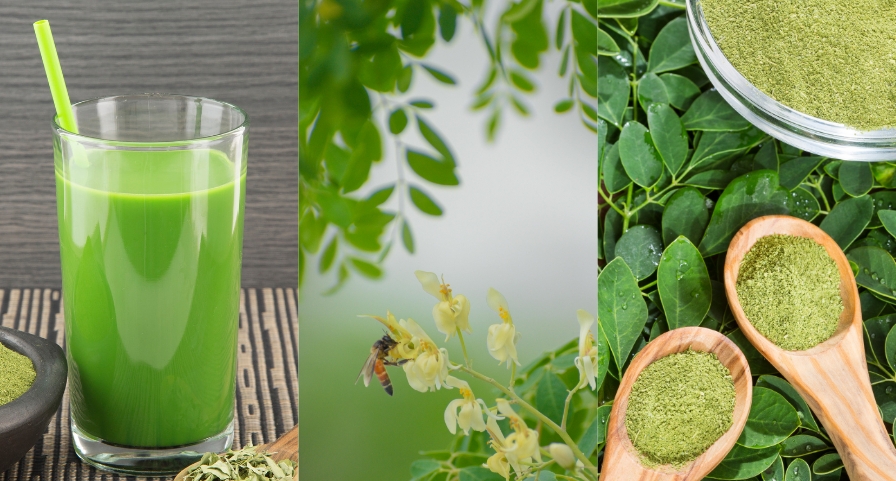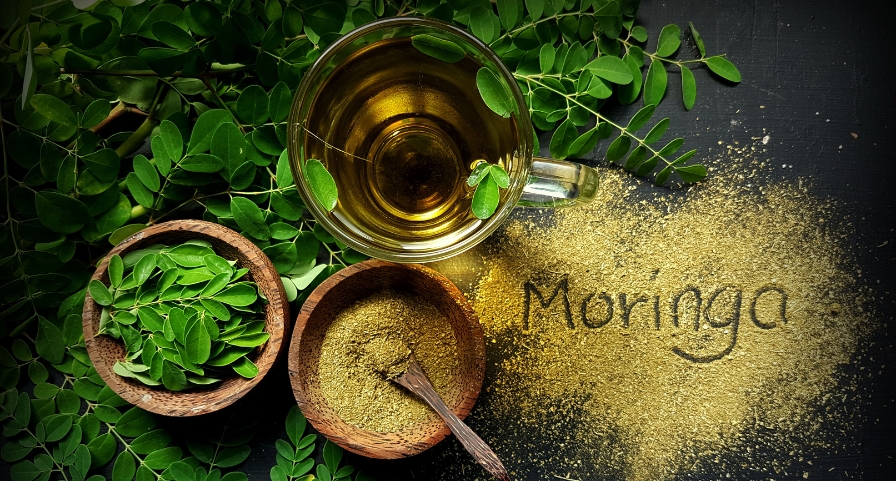When Praveen Bhai Patel caught a drift of Moringa’s demand soaring high, he decided to break free from the castor, cotton, and chickpeas cultivation he had practiced all along on his 10.7 hectares of land in Gujarat’s Dudhelilat village.
He decided to switch completely to Moringa farming. With technical guidance from the Indian Council of Agricultural Research and Indian Institute of Soil and Water Conservation Research Centre, he eventually took the leap of faith. His decision made him a millionaire, leading to an excess of Rs 20 lakh in earnings from his land.

Patel isn’t the only one. Hundreds of farmers across India are turning to Moringa to rescript their destiny. It is commonly known as sahjan in Hindi and drumstick, horse radish or even “miracle tree” in English thanks to its incredible versatility and the wide range of benefits that can come from all parts of the plant. Not just that, the Indian native variety is able to withstand both severe drought as well as mild frost conditions. So it’s little wonder social media and the produce markets – in India and beyond – are buzzing about Moringa Oleifera.
When Prem Kumar from Kajara village in Rajasthan made the switch to organic Moringa cultivation in 2020, he reported reaping three times his input cost per hectare. And just a couple of months ago Pankaj Kumar from Punjab’s Ratnana village made headlines for exporting Moringa powder worth Rs 1 crore to Germany.
“We started cultivating Moringa in 2020. Currently we are growing it in four acres of land and compared to wheat varieties that fetch between Rs 8,000 to Rs 10,000 per quintal, Moringa gets us at least five times more returns,” says Dr Pankaj Kumar who partnered with Germany-based Vela Cell UG for exporting Moringa powder.
Also read: Nutrition gardens help students learn better and eat better
Moringa – from Indian soil to international shores
Rayagada in Odisha sent its first shipment of drumsticks to Dubai in April this year. Reportedly, the Moringa crop in Odisha is higher in bioactive compounds owing to the state’s agro-climatic conditions.

In fact, the state of Tamil Nadu has been intensively focusing on the export of Moringa and has made quite a few strides in that direction. It has declared Theni, Madurai, Dindigul, Thoothukudi, Ariyalur, Tiruppur and Karur districts as ‘Moringa Export Zones’ (MEZ). More than 20,741 hectares in the state are already under moringa cultivation, producing 841,807 metric tons.
It has also established facilities to turn the cash crop into more than 30 value-added products such as tea, powder, seeds and oil as they draw a higher value.
Interestingly, Aravakurichi in Karur district is popularly known as Tamil Nadu’s “Moringa Central”. In this small panchayat town, about 2,984 hectares are under moringa cultivation. Of the 12,000 odd farmers here, more than 10,000 grow moringa. The Pradhan Mantri Formalisation of Micro Food Processing Enterprises (PMFME) scheme has also approved Moringa as One District One Product (ODOP) for Karur district, and that is further helping the cause.
Just why is Moringa called a “miracle tree”?
Riding on a host of nutritional benefits that find traction in pharma, cosmetics, and food and beverages industries, the $8.15 billion global moringa products market is projected to grow at a CAGR of 9.6% till 2030.

A box of mere 60 gms of moringa capsules is fetching as much as Rs 400 in India. And 200 gms Moringa powder ranges anywhere between Rs 300-Rs 700. Moringa beauty oil is even pricier, commanding as much as Rs 1500 for a 30 ml bottle.
Moringa can demand such a premium due to a host of health benefits that have earned it the “miracle tree” and “super food” tags. It has protein, calcium, eight essential amino acids, iron, vitamin C, vitamin A, minerals, and more. Research points out that it has high medicinal value and is anti-inflammatory, antimicrobial, antispasmodic, anti-tumour, and anti-diabetic.
According to the Ministry of Ayush, every part of the Moringa plant is useful. Its leaves alleviate inflammation in conditions such as headaches and bronchitis, its seeds help manage tumours in the prostrate and bladder, its pods are useful for hepatitis and joint pain relief, its roots treat kidney stones and liver disorders, the bark heals wounds and skin infections and the gum reduces fever.

Hence, its demand as a nutritional supplement and for food fortification has been steadily growing. Consumers are taking it to boost their immunity, improve their energy levels, digestion and bone health. Though experts do point out the need to exercise fair caution before blindly following the “superfood fad”.
Also read: Reimagining the idea of processed foods
The lead photo on top shows a vibrant display of Moringa tea, fresh Moringa leaves, and finely ground Moringa powder—three of the most popular forms in which this versatile superfood is consumed in India and abroad. (Photo credit: Canva)
Kiran Yadav is a Delhi-based freelance journalist.








